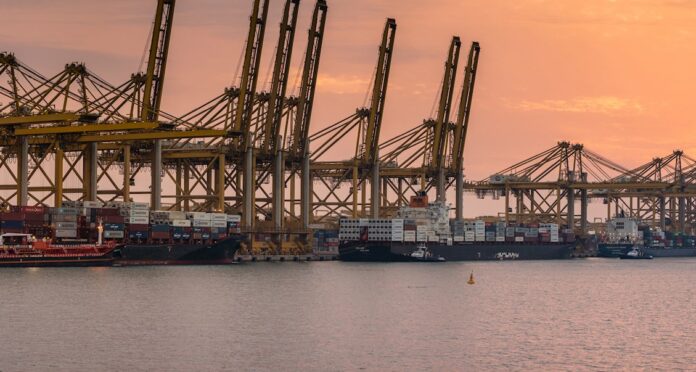With Far East-Middle East container volumes seeing double-digit growth year-on-year, several liner operators have added more services to this lane.
Japan’s joint venture Ocean Network Express (ONE) and Taiwanese intra-Asia carrier TS Lines are launching the South China-Middle East Express (SMX) service on 8 November, connecting the southern Chinese ports of Shekou, Da Chan Bay, and Nansha with Jebel Ali and Hamad. TS Lines is assigning a 2,900 TEU ship to SMX, while ONE said it will nominate a vessel at a later date.
TS Lines is also working with X-Press Feeders and South Korean intra-Asia operator Sinokor Merchant Marine to start a joint service, Central China Middle East Express (CME), on 23 September, connecting Qingdao, Shanghai, Ningbo, Shenzhen, Port Klang, Colombo and Jebel Ali. Sinokor will contribute two 8,000 TEU ships, X-Press will assign two 7,000 TEU ships and TS Lines will deploy a 7,000 TEU ship.
TS Lines, particularly, is so bullish about trade between East Asia and the Middle East that it has also announced newbuilding orders for two 4,300 TEU ships from CSSC Huangpu Wenchong Shipbuilding.
Sinokor made its entry into the East Asia-Middle East lane in May, when it started the SGX1 service with China United Lines, Unifeeder and Milaha (Qatar Navigation).
On 31 August, MSC started a standalone service, Clanga, connecting China with the Saudi Arabian port, Dammam. Six ships, ranging from 2,500 to 4,700 TEUs, have been assigned to Clanga, which calls at Shanghai, Ningbo, Shekou, Singapore and Dammam.
Consequently, MSC revamped its Falcon service, which previously connected the South Korean port of Busan with the Middle East. The new line-up will be Tianjin, Busan, Qingdao, Shanghai, Ningbo, Xiamen, Nansha, Shekou, Singapore, Jebel Ali, Abu Dhabi, Hamad, and Umm Qasr.
MSC explained that Clanga aims to mitigate port congestion in the Middle East. Drewry’s senior manager for container research, Simon Heaney told Container News that Asia-Middle East trade has grown 19% year-on-year in H1 2024.
He said: “Trade has been growing very solidly since Q4 2022, following five straight negative quarterly performance beforehand. Growth in H2 2024 are likely to subside due to stronger comparison periods, but the trade has shown little sign of being derailed by the logistical challenges in the Middle East.”
Martina Li
Asia Correspondent







